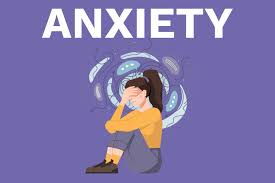
Understanding Anxiety: Signs, Symptoms and Coping Strategies
What is Anxiety?
Anxiety is your body's natural response to stress. While everyone experiences anxiety occasionally, persistent and excessive anxiety may indicate an anxiety disorder. It's important to recognize that anxiety disorders are real, treatable medical conditions.
Common Signs and Symptoms
Physical Symptoms
- Rapid heartbeat or palpitations
- Shortness of breath
- Sweating
- Trembling or shaking
- Fatigue
- Sleep disturbances
- Muscle tension
Emotional and Mental Symptoms
- Excessive worrying about everyday situations
- Feeling restless or on-edge
- Difficulty concentrating
- Irritability
- Feeling of impending doom
- Racing thoughts
Effective Coping Strategies
1. Breathing Exercises
## Deep breathing is one of the most effective ways to manage anxiety in the moment. Try the 4-7-8 technique:
- Inhale for 4 seconds
- Hold for 7 seconds
- Exhale for 8 seconds
Repeat this cycle 4-5 times.
2. Progressive Muscle Relaxation
## This technique involves tensing and relaxing different muscle groups:
- Start with your toes and work up to your head
- Tense each muscle group for 5 seconds
- Release and notice the relaxation
- Move to the next muscle group
3. Lifestyle Changes
- Maintain a regular sleep schedule
- Exercise regularly (30 minutes daily)
- Limit caffeine and alcohol
- Practice mindfulness or meditation
- Keep an anxiety journal to track triggers
4. Professional Support
## Don't hesitate to seek professional help. Treatment options include:
- Cognitive Behavioral Therapy (CBT)
- Medication when necessary
- Group therapy
- Support groups
Remember, managing anxiety is a journey, not a destination. Be patient with yourself and celebrate small victories. With the right support and tools, anxiety can be managed effectively.